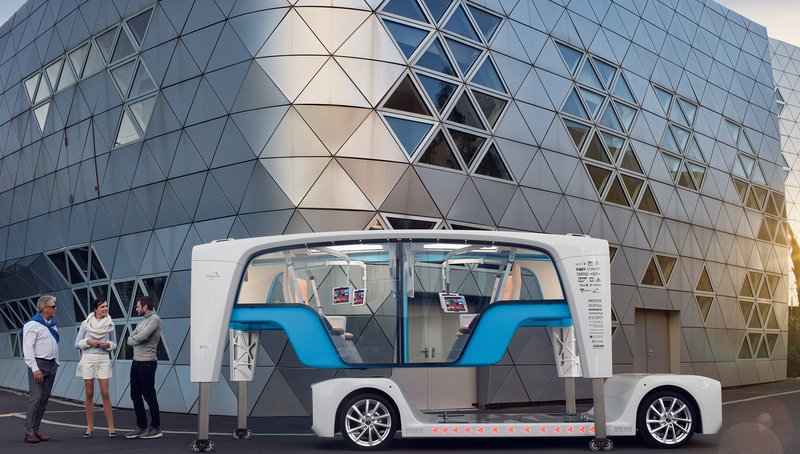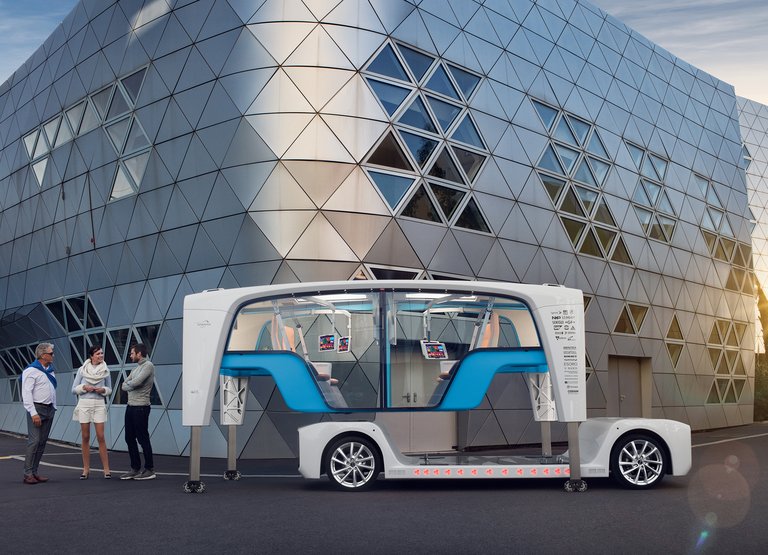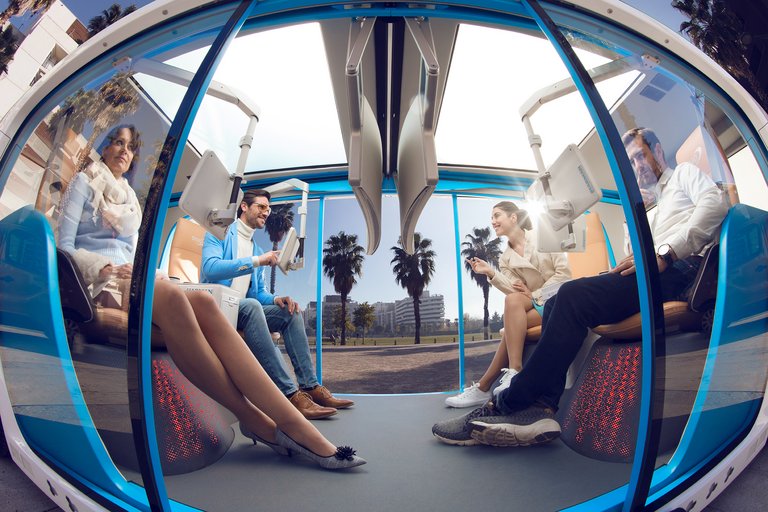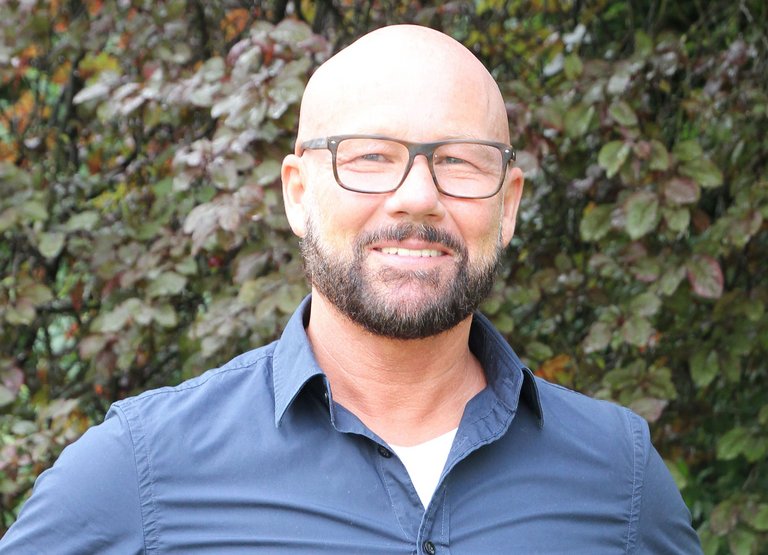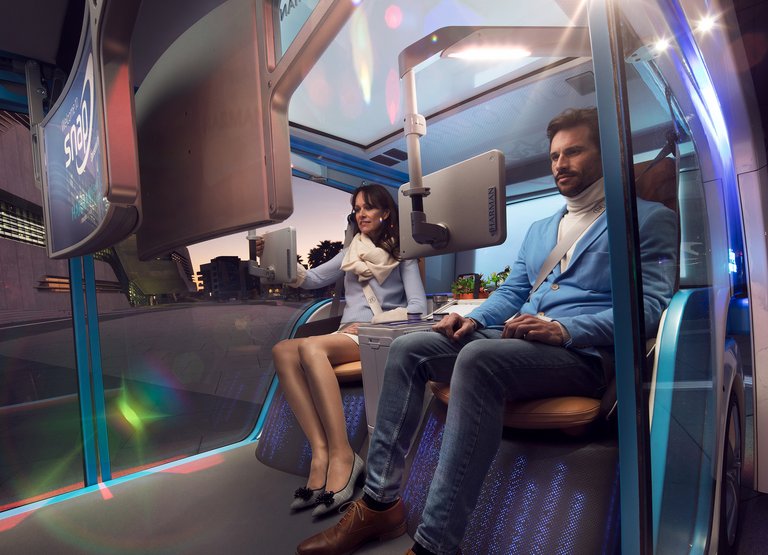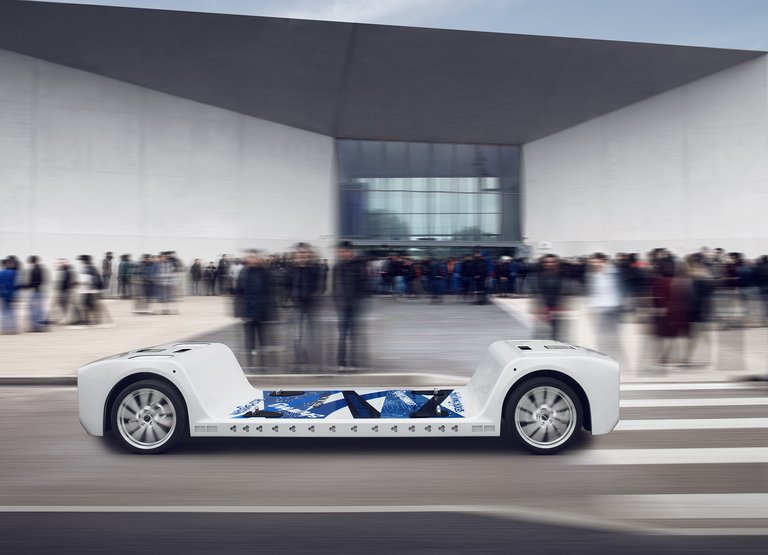Interior Visions at the Geneva Motor Show
- Surface specialist continues tried and tested partnership with Rinspeed
- Autonomous concept car Rinspeed SNAP celebrates European premiere at Geneva Motor Show
- Three innovative surfaces make an important contribution to the design of the interior
Hanover, March 6, 2018. As a technology company, Continental drives the mobility of the future forward with its innovative vehicle concepts. This is why - with its surface know-how from the Benecke-Hornschuch Surface Group business unit - the company is participating in the autonomous concept car Rinspeed SNAP from the autovisionary Frank M. Rinderknecht. For the creative Swiss powerhouse, the European premiere of the Rinspeed SNAP is its 40th consecutive participation in the Geneva Motor Show, while Rinspeed's partnership with the surface specialists from Weissbach can look back on an eleven-year history. The SNAP concept car is the sixth cooperation which the interior designers have entered into with Rinderknecht. The vehicle and its interior innovations can be experienced at the Geneva Motor Show on stand 6240.
Before its acquisition by Continental, the Hornschuch Group had already been an on-board partner for the Rinspeed Concept Cars sQuba (2008), Bamboo (2011), Dock+Go (2012), MicroMax (2013) and Budii (2015) with its sophisticated design, high-quality materials and fascinating interior surfaces. In 2017 Continental had then drawn attention to itself with its own concept car, which was created at the Design Center in Weissbach on the basis of a Citroen C4 Cactus. "After we at Rinspeed Budii had been responsible for the entire colour, structure and material concept for the interior, we had carried out all the improvements that were possible. Our own concept car was therefore the only logical consequence," says Ralf Imbery, Head of the Design, Digitisation and Innovation Management Division for Surface Materials.
In the show vehicle 'The Pioneer', the Interior Design Team consistently implemented the "New Business" concept with 14 new materials. They show unusual colours and structures, reflections, metallics, cutouts, breathability and PVC-free surfaces. "The Pioneer was the first of its kind. The platform allowed us to demonstrate our material and design expertise," Imbery went on.
The Future in Motion
Although the concept car 'The Pioneer' was a great success, Continental looked further into the future. "Which interior concepts are suitable for the mobility of tomorrow and the day after? Which surfaces will be accompanying us in the future? What are the roles of design and function in this? These are the key questions," says Imbery, pointing out that "Of course design is important when talking about surfaces. But in the future it will be essential to combine design and function perfectly. The two must be in harmony with one another. We live in a world in which the technical demands on our products are constantly increasing, for example when we think of anti-bacterial and anti-microbial equipment. At the same time, surfaces should have an attractive appearance and an interesting feel. Light in particular opens up many additional opportunities for us here. We are talking about the so-called black panel technology, switchable surfaces with integrated sensors or changeable surfaces - known as morphing surfaces. These are all steps on the path to the future, where design and function are directly linked to one another. It was therefore easy for us to become enthusiastic about the Rinspeed SNAP. The overall vehicle concept with chassis (skateboard) and body (pod) and their connection is new and innovative...".
The Vehicle as an Individual Living Environment
"The SNAP concept plays straight into our hands," says Imbery, "as the vehicle will above all be an individual living environment in the future. At the same time it is an office, means of transport, cinema, relaxation zone and much, much more. But no matter how we use the vehicle, we - as a surface specialist - can use our surfaces to support and connect the various forms of use in the best possible manner."
With a total of around 8 square metres, three different materials occupy the largest area in the pod, which is the body of the SNAP. They shape large parts of the interior and thereby make a significant contribution to its overall appearance.
Modern, Cool Look at the Base
The newly developed skai Hexy, a TPO material, displays its strengths on the bottom of the pod. The innovative hexagon design shows the slightly washed-out print of the geometric form, which is deliberately depicted as being organically distorted - in contradiction to its formal structure. The contours are therefore pronounced to varying extents, the hexagons appear sketchy, lie partly on top of one another and thereby create a modern, cool look. The colour scheme of blue on grey was chosen because both tones dominate in the SNAP interior. The structure of the print is imperceptible from a distance, with the material looking like a homogeneous grey surface and the discreet print only revealing itself from close up. skai Hexy has an ultra-matt surface with sand embossing, which at the same time produces an anti-slip effect. The PVC-free material comes from the TPO collection known as skai Transporter. It is 3D deformable, robust and resistant to abrasion, oil and chemicals. It is particularly easy-care and therefore pre-destined for the footwell and cabin area. The skai Transporter collection received the German Design Award – Winner 2017.
Variable Lighting Concept with Translucent Surfaces
Acella Hylite in the colour slate metallic is used in the lower seat area, i.e. the seat base. The deeply embossed material is backlit. It has fine peaks embossing and a black, translucent covering layer. As ambient lighting, this is intended to create or support different moods depending on the form of use, while at the same time serving as a warning light to provide more safety in road traffic. The backlighting is provided by LEDs, while the frequency, gradient and colouring are electronically controlled. When the light is off, the disappearing effect can be observed. The material then appears greyish blue with a shimmering effect, with nothing indicating the light function. Acella Hylite has a very different appearance when switched on and off. This results in an entirely different perception of the colour change. The Fade embossing with its gradually tapering structure also contributes to this. Acella Hylite is also used for the shelves behind the seats - here in the colour cashmere metallic, a lighter grey. The colour scheme follows a colour concept that becomes brighter and brighter from the base to the top. Here, too, the disappearance effect is created, although the embossing is regular, with backlighting partially provided by LED panels.
Durable and Hard-wearing Surfaces in the Seat Periphery
With skai Neptun Ravenna, an almost indestructible material adorns the seat railings and the seat frame in the pod in the colour off-white. As a result of its nanocoating, the light colour makes the material particularly insensitive to dirt. It was originally designed for outdoor use and is therefore very hard-wearing and particularly stable to UV light. The matt surface of skai Neptun Ravenna is refined by fine sand embossing.
Authentic Street Style for the Skateboard
The chassis (skateboard) is covered with digitally printed d-c-fix stripes in graffiti style. Not only the geometric arrangement, but also the different types of lettering are typical. The terms take up current social issues such as "autonomous driving", "connectivity", "eco-system" and "urban mobility". With their street art-inspired design, they lend the skateboard an urban charm – and therefore street credibility.

Axel Schmidt
Head of Communications
ContiTech Surface Solutions

Wolfgang Reinert
Head of Media & Public Relations
ContiTech
